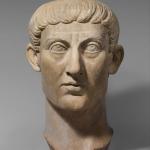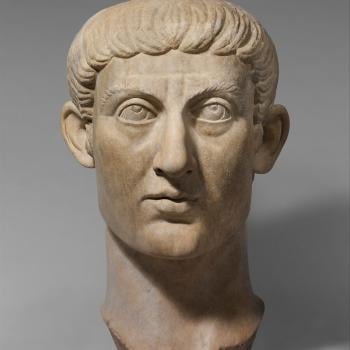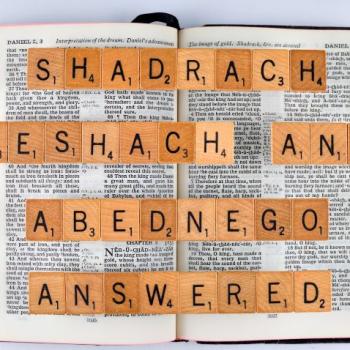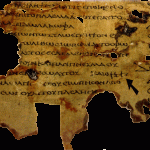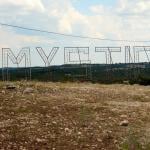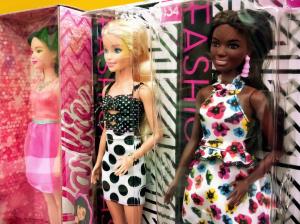
Whether or not you hold the Bible sacred, the Bible impacts your life because its stories shape American literature and culture profoundly. That’s why I host a podcast called Wild Olive and why I teach a course called The Bible as Literature. When you’re familiar with biblical stories and characters, you catch shades of meaning that amplify your reading, viewing, and listening experiences. Biblical references turn up where you least expect them, packing serious philosophical and theological heat. Whenever we read the Hebrew Bible, the Catholic Bible, the Protestant Bible, or any other Bible, we’re plugging into primal source material for a vast range of literature and popular culture.
Greta Gerwig’s Barbie, for example, rethinks the Genesis creation stories. In a May feature in Vogue, Gerwig compares Barbie and Ken to Adam and Eve. “Barbie was invented first,” Gerwig says, “Ken was invented after Barbie, to burnish Barbie’s position in our eyes and in the world. That kind of creation myth is the opposite of the creation myth in Genesis.” For a deeper dive on Barbie and Genesis, check out Alissa Wilkinson’s VOX article “In the beginning, there was Barbie.” Barbie history sure flips the script of Genesis 1-3. Gerwig’s Barbie plays with that and also evokes the Bible’s Book of Ruth, an ancient female buddy story that celebrates the power of women’s bonds to re-make the social order.
You can love the Barbie movie without noticing echoes of Genesis or Book of Ruth, but appreciating those biblical parallels juices up your viewing. I’m here on Patheos (and the Wild Olive podcast is on Facebook, Instagram, and wherever you get your podcasts) to help readers, viewers, and listeners connect the dots between the Bible, literature, and contemporary culture.
Reader Beware: Barbie Spoilers Below!
I’m enjoying the public conversation about Barbie and Genesis but I’m even more interested in Barbie and the Book of Ruth. (If you haven’t seen the movie, you might want to stop reading and come back later because I am about to blow the ending.) Barbie’s biblical and religious references don’t stop at Genesis. Barbie also works to envision a feminine God or Creator figure. Conveniently, the actual creator of Barbie was Ruth Handler, a Polish Jewish immigrant.
As the movie ends, Rhea Perlman turns up as a wisdom figure named Ruth, who shows Barbie the way back to paradise and teaches Barbie the meaning of life. I appreciate this image of sophia–wisdom–as a “five-foot-nothin’” Jewish bubbee named Ruth. In addition to portraying Ruth Handler, Barbie’s inventor, the character’s name echoes the biblical Book of Ruth, a book that, conveniently for the movie, explores the power of connection between women. Conventional readings tend to understand the biblical Ruth’s story as a celebration of a Moabite woman having the spiritual good sense to start worshiping the Israelite God, but there are other ways to read the story.
About The Book of Ruth
The Book of Ruth portrays bonding between women. Naomi and Ruth are a mother/daughter-in-law pair so attached that they form an unprecedented social partnership after their husbands die. Rather than returning to her own family upon being widowed, Ruth stays with her mother-in-law, a ground-breaking choice for a semitic woman in the ancient world. Ruth pledges her loyalty to Naomi: “Where you go, I will go; where you lodge, I will lodge; your people shall be my people, and your God my God.” (Ruth 1:16 New Revised Standard Version). Some present-day wedding ceremonies include this verse, perhaps without all heterosexual couples realizing that these words pledge loyalty between two women.
Ruth and Naomi create a matricentric family. Naomi coaches Ruth how to land a new husband (necessary in the ancient world for women’s survival). The two women become matriarchs in the line that produces Israel’s first great monarch, King David. The Books of Samuel and Kings feature King David presiding over Israel’s legendary golden age. Ruth and Naomi’s social partnership completely renovates the Israelite social order.

In addition to breaking cultural norms with their attachment, Ruth and Naomi cross ethnic boundaries to form their family. Ruth is Moabite and Naomi is Israelite, which would be like a Yankee mother-in-law and Confederate daughter-in-law deciding to keep on being family during the American Civil War after their men get killed. In the Hebrew Bible’s overall narrative arc, brimming with inter-ethnic conflict, Ruth’s story celebrates the power of inter-ethnic cooperation.
Does Book of Ruth Pass the Bechdel Test?
Although these women’s fortunes revolve around men and reproductivity, I’d argue that Book of Ruth actually passes the Bechdel Test. To pass the Bechdel Test, a story must feature at least two women, these women must talk to each other, and their conversation must concern something other than a man. Certainly, Ruth and Naomi talk about men, as they must to survive in a male-centered culture. They also talk about economic survival, grief, loss, family, aging, navigating distinct cultures, and their love for each other. Oh yeah . . . and cosmetics.
Barbie aces the Bechdel test. Barbie and her “handler” Gloria bridge ethnic boundaries and save Barbie’s world from patriarchy. The film slyly points out that Barbie isn’t “white savior Barbie,” since Barbie gets saved by mother-daughter power team Gloria and Sasha, played by Latinx actors America Ferrera and Arianna Greenblatt. Gloria and Sasha strengthen their bond over the course of the movie, restoring a relationship made prickly by Sasha’s adolescence. With its wisdom figure named Ruth, Barbie highlights its interest in woman-to-woman connectedness, cross-cultural bonds and mother/daughter power.
Happy endings for Liberated Women
Barbie, like the Bible, involves itself in the search for wisdom. Each character learns something during the course of the action that leads to a richer, more satisfying life. Summarizing a story’s golden nugget is never wise, but I’m going for it anyway. When Barbie meets her maker toward the end of the film, she places her hands in Ruth’s and their connection pours forth an image sequence that emphasizes the preciousness of ordinary moments. Holding a baby. Hugging a Mom. Running through grass. Feeling the sun. The beauty of the ordinary brings Barbie to tears. Savoring the glorious ordinary, Barbie suggests, leads to real freedom and abundant living.
In her book Writing Beyond the Ending, literature scholar Rachel Blau DuPlessis points out that in nineteenth-century novels, there are only two endings for women: marriage or death. Twentieth-century women writers, DuPlessis argues, invented new endings for women. Gerwig’s ending for Barbie feels revolutionary to me. Through its voice-over narration, the movie self-consciously asks “What kind of an ending can Barbie have?” The film’s answer is beautiful: the heroine meets her maker, and her life goes on, new and improved. Barbie finds wisdom (or God, depending on how you interpret the Rhea Perlman/Ruth Handler character) and creates a more balanced and satisfying life for herself. Amen to that.



